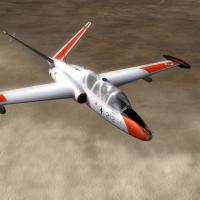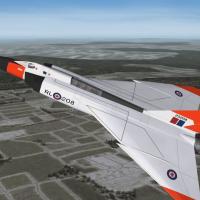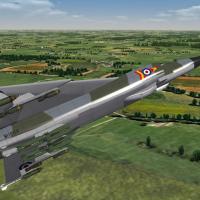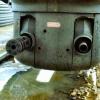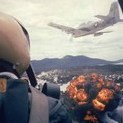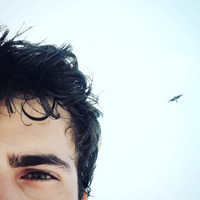Leaderboard
Popular Content
Showing most liked content on 07/08/2022 in all areas
-
9 points
-
5 points
-
4 points
-
4 pointsnah, ground crews pranking new LTs, went a little far. COL was pissed when it got pointed out
-
4 pointsThere actually are seats, but you can't see them from that Point of View.
-
3 points
-
2 points
-
2 pointsThat's great. Love to see 2-searers. I wonder what kind of mischief the guys in the cockpit did to deserve a no-seat-flight punishment. Technicians must have been mad at them.😀
-
1 pointNice to see you again!!! Indeed, I'd shoot TK another, and like Streak said, post on the discord and facebook sites too.
-
1 pointi fixed that by adding mirage dlc planes again 😁✌️
-
1 pointYour best bet is Twitter https://twitter.com/thirdwire?s=20&t=WFE-4yhkADjBe4qcpy-5CQ
-
1 pointi know the title says Block 30 or 40 D models now, while waiting on a few other things, heres a block 15 skin
-
1 pointcase in point. and why research takes soo, soo long. trust no one real photo. fake loadout.
-
1 point
-
1 pointHello everyone! Report for today: I am still working on F-4s overhaul. it surprised me that each time I reearch on various F-4s, they come out with information that surprised me. For example, UK phantoms have the ability to use Sidewinders while loading twin rocket pods at the same time. TW UK F-4s did not allow that. Now that is fixed. Here is a picture of actual UK F-4K: F-4K Phantom FGR.1 in SFCE: Eagle114th
-
1 point
-
1 pointvery nice, and the Spad bird on the bottom got me to catch a hiccup (wrong tail feather texture) when i went to go double take on it and mine! but your going for this century, im repping the 90s. so we're good for tonight, i'll take it out further west
-
1 pointBottom details https://www.airplane-pictures.net/photo/232328/c-927-argentina-air-force-douglas-a-4-a-4ar-fightinghawk/
-
1 point
-
1 point
-
1 point
-
1 point
-
1 point
-
1 point
-
1 point
-
1 point
-
1 point
-
1 point
-
1 point
-
1 pointresearching can be draining. should take a trip to the Gulf... if anyone has better pics of the snake on the fuselage, i'd be appreciative. this one is a vector art that looked close to teh pics, then traced, chopped up and rearranged until it was close.
-
1 point
-
1 point
-
1 point
-
1 point
-
1 point
-
1 point
-
1 point
Version 1.0.0
468 downloads
TSR2...........The Alternative Story 6 April 1965 was set to be a sad day for the British aircraft industry, the cancellation of the TSR2 was imminent, the costs were spiralling and the project was slipping further backwards, the project had its supportures but its biggest enenmies were those in power. But, on the morning of the 5th April something nobody saw coming happened, something that if it turned out to be true could save the entire project and thousands of jobs in the UK avation industry, indeed ministers in parliment were astonished to say the least, if the project was killed off now the British public would be furious , questions would be asked and answeres would be demanded, the government had some serious decisions to make, and quickly for the offer was for 24 hours only ! So what had happened ? Well at 9:45 GMT the British Aircraft Corporation were thrown a lifeline, an American company had stepped in with an offer to see the project through, they were willing to finance all that had been spent on the project so far, this would mean that all the British tax payers money was safe, they were willing to pay back to the British government what they had spent on development costs so far. In return they wanted the British to basically start again with the project financially, they would work with BAC to carry out further development and testing on a 50/50 cost basis , supplying their own expertise as an aid to the programme. So, essentially the TSR2 project could be saved, from now on the cost would only be half of the projected costs , somebody wanted in on this venture badly, but who and why ? April 6th was the day the axe was supposed to fall on the TSR2, government ministers shuffled in their seats as the announcement was due to be made, silence fell , the announcement was short. "The TSR2 Project WILL Continue", there were gasps of amazement amid cheers of joy. Over the next few hours many questions were asked, some answered, some not, but the main one was WHO ?? Enter onto the scene one of the worlds if not the worlds most famous aircraft manufactures, Boeing Yes, Boeing, the company famous for its outstanding range of airliners and bomber aircraft. Boeing saw the potential of the TSR2 programme and whilst traditionally being a manufacturer of large designs it wanted a smaller tactical bomber/attack aircraft than its previous offerings. The war in Veitnam was looming and rather than starting from scratch the wise men at the company saw that the combined companies that make up the British Aircraft Corporation had the expertise to pull the project through , they just needed access to more money, money Boeing were willing to commit. Boeing would not only help financially, they wanted to help solve the current issues and take development further, indeed they wanted to market the project world wide ! The flight testing carried on at quite a pace, problems were found and solved, with there not being as much red tape and politics to go through as previously progress was finally being made. To get things moving and keep politicions quiet the first batch of the BAC/Boeing Thunderstrike GR1A as it was to be known entered service with the RAF on December 1st 1966 and the RCAF taking its aircraft the following year. Only 100 of this version were produced 60 for the RAF and 40 for the RCAF. The GR1A was hurried into service so that the BAC/Boeing designers could address some of the types more seroius problems. From day one the TSR2 had been dogged by the extremely tight fit of its engines, airframes were matched to engines and a single engine removal to take 60+ hours, obviously this could not continue, there was no way the airframe could be widened externally, the only sensible answer was to get rid of the bombay and move the engines slightly closer together, the airframe was strengthened for under fuselage pylons and a fixed 700 gallon tank in its place also doubling up as a heatsink for gearboxes and the like, this was a trade of in all directions but as the original design required a removeable 680 gallon tank in the bombay and an optional 1000 gallon panier tank it was considered the best way forward. The next issue was with the main gear, right through the testing phase it had proved troublesome and prone to slapping when the first wheel made contact with the runway, numerous fixes had been tried but even now the in service GR1A's were still having issues. Again Boeing's design team came up with the solution, it was stunningly simple ! They got rid of the tandem swivelling upon retraction complicated system for a more conventual single leg with a pair of wheels attached to it, the same alloys as used on the B52 main gears were used as it was considerably stronger the the British equivalent. The improvements implemented over time were immense , just about every single part of the aircraft and its systems were changed in someway , only the basic shape of the original TSR2 remained the same. Even while the original GR1A's were being delivered the next model was starting to enter the production phase, this time the aircraft had gained two 30mm Aden cannon under the nose, the original proposal for a side ways looking radar had been abandoned soon after Boeing got involved [this was now installed into the reconnaisance pod] so the cannons used up the space that had been gained by its removal. The next design change was probably the most ambitious , Boeing wanted something that was never on the cards for the TSR2 project, they wanted a navalised version , something to compete against the RA-5C Vigilante, the British design team were astounded by this, but Boeing who had several aircraft for evaluation and flight testing had now got their own production line running, with all this extra capacity anything could now be possible ! The modifications to the bombay area and fitting of under fuselage pylons had inherantly strengthened the whole underside of the aircraft, a "full strength" arrestor hook had been installed from day one instead of the original proposal for an "one time" emergency type, the fin was essentially cut in half to make it fold for carrier stowage. Production of all the navalised versions was to take place at Boeings own plant, initally the US Navy were very reluctant to even trial the idea of a British jet on their carriers, but Boeing's persistance paid off and the Navy placed orders for two versions ; an all out attack variant and a dedicated reconnasiance platform. For the Marines it was a no brainer, the aircraft was perfect for their "in country" mud moving roll. It should be noted that all these US aircraft and indeed the Export version that followed all used US built Pratt and Whitney engines, US sourced ECM and countermeasure systems and carried either two Browning 20mm cannon or the 20mm Vulcan "gatling gun" Export customers for these US built versions included Isreal and Austrailia among others. Meanwhile back in the UK the RAF versions continued to flourish, changes were generally small and more inline with keeping up with current upgrades to software and such, the biggest problem was with there being so many versions in service at the same time, engines grew ever more powerful even though the design had never been short of power, a dog fighter it was not but down low at high speed nothing came close. The terrain following radar was a world beater, the ride was stable down low and the wide angle HUD made sure "head down" time was virtually not needed. South Africa, India, Saudi Arabia and Canada were among the UK spec exports. Once the Royal Navy accurired its Malta Class carriers it too became users, these carriers and these aircraft being the biggest the Royal Navy had ever operated. The one thing that did come about from the navalised versions was the fitting of cannards to the nose section , roughly in line with the pilots position. These were fitted to cure a nose down tendancy in certain circumstances when taking off from a carrier, infact several US Navy aircraft were lost and all remaining aircraft were only to be flown by senior pilots with 2000 hours or more. Two small pitot tubes were positioned in front of each intake to limit the angle of the canard if the airflow became close to intake surge limits. Pilots reported a general feeling of more stability under weapon launch conditions and the RAF's GR7 version came with them as standard fitment........if only they had been discovered earlier. The GR7 was basically the RAF's ultimate Thunderstrike, the original internal ECM fit was very limited in effectiveness and difficult to upgrade so after many years of trying different configurations of US built pods the design team at BAC eventually came up with two purpose built pods which could be installed onto the wingtips replacing the two IRM stations, the pods could be removed in less than one hour making upgrading easier and as a bonus they were more aerodynamic and didnt use up a valuable wing pylon. The complete number of versions and operators as well as actual combat accounts would be the topic of several volumes, far too much for this brief account of an aircraft which was destined never to be if it was not for a last minute gamble from Boeing. After a total production run from the two factories of 4500 aircraft I think it is safe to say the gamble paid off. TSR2_2017 As you've probably already realised the TSR2 is a bit of a favourite of mine, So.....what's new this time you ask ? More versions, more stuff remapped, more model tweaks, new cockpits and still more to do. Half the fun is seeing if you can find what's changed from the previous releases [if you had them] This is one aircraft I will probably never stop tweaking so I thought I'd better get what I have so far realeased. For those of you that already have the older version I can't stress enough that you should move them somewhere safe in case you dont like these. Just letting them overwrite is NOT a good idea as you will screw up both sets. Installation is just a case of copying everything FROM the TO_MOD_FOLDER TO your modded game install. Just remember this is a What If, I'm not really concerned about what would have been feasable and what would'nt, we will never know so I've just gone on what I would like to see. Enjoy Sundowner [Ant] 17/09/2017 .......NOT TO BE USED IN ANY PAYWARE OR RE-RELEASED WITHOUT MY PERMISSION.... -
1 point
Version 1.0
642 downloads
The Israeli Air Force operated a license-manufactured version, the IAI Tzukit. While principally a trainer, it was used in the 1967 Six Day War by 147 Squadron as a close support aircraft, attacking targets on the Egyptian front during the first day of the war, when Israel's more capable combat aircraft were deployed on Operation Focus against Arab air bases. They were then deployed against Jordanian forces, including armour, on the West Bank. The Magister proved effective at the close-support mission albeit with heavy casualties, with six being lost. 9 former Israeli and 3 French Magisters were acquired by the Salvadoran Air Force and used as both trainers and ground attack aircraft in the Salvadoran Civil War using bombs and nose-mounted 7.62mm machine guns. None are recorded as being lost to enemy fire, but only five were in operational condition by the end of the war. What's in: - A new plane; - 9 skins; - Historical decalsets; - Open canopy 10 key auto closing at take off; - Weapons - "real" sound; - Screens; - Loadout.tga; Credits: - Veltro2K - plane model; - Coupi ini edits, 1 Salvador Skin; - Paulopanz Templates, IDF skins, decals; - Baffmeister final data.ini and proper FM; - Spillone104 - sound; - Guyran & Nesher proper IDF writings; Install: - all mod folder content in your mod install - overwrite This is a dream gone true. All IDF Magister/Tuzkit for Israel wars. Thank you Ettore! That's all Enjoy @ paulopanz -
1 point
-
1 point
-
1 point
-
1 point
Version
764 downloads
Republic F-103A Thunderwarrior by FastCargo ********************** Version 1.0 (Initial Release) *********************** SF2 Version for Jan 2011 Patch and later. Aircraft Model - FastCargo Aircraft Textures/Templates - EricJ Decals - Wrench F-106 Cockpit - Kesselbut from Pasko F-106 package Some textures and FM work - FastCargo Weapons - Bunyap, adapted for SF2 by 331KillerBee Any errors are mine... Information on XF-103: http://en.wikipedia.org/wiki/Republic_XF-103 The Republic XF-103 Thunderwarrior was an American project to develop a high speed interceptor aircraft to destroy Soviet bombers. Despite a prolonged development, it never progressed past the mock-up stage. In 1949, the USAF issued a request for an advanced supersonic interceptor to equip the Air Defense Command. Known formally as Weapon System WS-201A, but better known informally as the "1954 Interceptor", it called for a supersonic aircraft with all-weather capability, intercept radar and air-to-air missile armament. Republic was one of six companies to submit proposals. On 2 July 1951, three of the designs were selected for further development, Convair's scaled-up XF-92 that evolved into the F-102 Delta Dagger, a Lockheed design that led to the F-104 Starfighter, and Republic's AP-57. AP-57 was an advanced concept to be built almost entirely of titanium and capable of Mach 3 at altitudes of at least 60,000 ft (24,400 m). A full-scale mock-up of the AP-57 was built and inspected in March 1953. A contract for three prototypes followed in June 1954. Work on the prototypes was delayed by continued problems with the titanium construction, and more notably by continued problems with the proposed Wright J67 engine. The contract was later reduced to a single prototype. In the end, the J67 never entered production and the aircraft it had been chosen for were forced to turn to other engine designs, or were cancelled outright. Republic suggested replacing the J67 with the Wright J65, a much less powerful engine. The project was eventually cancelled on 21 August 1957 with no flying prototypes ever being completed. The design was given a brief reprieve as part of the Long-Range Interceptor - Experimental (LRI-X) project that led to the XF-108 Rapier. Part of this project was the development of the advanced Hughes AN/ASG-18 pulse-doppler radar and the GAR-9 missile. Republic proposed adapting the F-103 as a testbed for these systems, although it wouldn't be able to come close to meeting the range requirements of LRI-X. Some work was carried out adapting the mockup to house the 40 inch antenna, which required the nose section to be scaled up considerably. Nothing ever came of the proposal, and testing of the ASG-18/GAR-9 was carried out on a modified B-58 Hustler instead. Information on F-103A (this release): This aircraft is based on heavily on the mockup at the time of cancellation, with 6 of the smaller AIM-4 Falcons and 36 FFAR rockets. Performance is based on reasonable speculations and closely matches what was in the offical USAF proposed Standard Aircraft Characteristics document. Some specific things to note include - This is a point interceptor...designed to give you enough gas for maybe two passes at bomber type targets. It is recommended to be between 250 and 500 knots indicated for your attacks, as your FFARs and AIM-4s will tend to aim exactly at what the nose is pointing at within those speeds (this includes the AI). To activate the front 'viewport', cycle through your radar modes...be advised while you are using the 'viewport', the radar will not work. To extend the periscope on the external model, use the 'Arresting Hook' key. The front missile bays are automatic, the rear missile bays/FFAR pods are manual...you must open them with the 'Bomb Bay' key before you can fire either the rear missiles or FFARs. This model uses the newest ThirdWire exporter, and as such, the LOD files (except for the lowest 2) are not compatible with any version of the sim older than Jan 2011 (Exp 2 with the Jan 2011 patch). You have been warned... This will be a difficult aircraft to fly and be successful on a regular basis in 'Hard' mode. If you want an air-to-air challenge, this aircraft will give you one. Good luck and report any 'serious' issues (ie game crashing or grevious errors) to me at CombatAce. FC 12 Feb 11
Important Information
By using this site, you agree to our Terms of Use, Privacy Policy, and We have placed cookies on your device to help make this website better. You can adjust your cookie settings, otherwise we'll assume you're okay to continue..




















